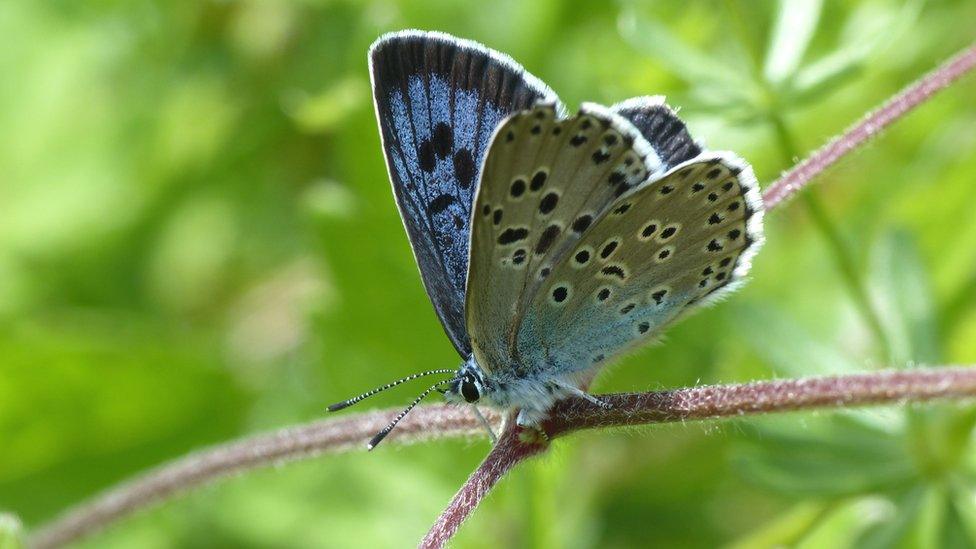Previously extinct large blue butterfly has 'best UK summer'
- Published

The rare large blue butterfly relies on red ants for its caterpillars to survive
A globally rare butterfly previously extinct in the UK reached record numbers this summer, experts say.
The large blue butterfly had died out in the UK by 1979 but has been being reintroduced since the 1980s.
Over the summer the species was recorded at 40 UK sites with 85% of the population supported at reserves in Somerset and Gloucestershire.
The population in the west of England now has the highest numbers of any area of the world, the National Trust said.
Large blue butterfly numbers have reached around 25,000 adults this year, through the right weather conditions over the past three years and conservation work.
Professor Jeremy Thomas, chairman of the joint committee for its conservation, said: "This rare butterfly is really important because it is more difficult to conserve than other butterflies due to its complex life cycle."
Impersonate ant grub
He said piecing together the details of that life-cycle was like a "detective story".
When blue butterfly larvae are about 4mm long, they drop to the ground, using a special "honey" gland to attract red ants.
Fooled into thinking the caterpillar is an ant grub, the ants carry them into their nests where the larvae then feast on ant grubs for 10 months of the year before hatching the following June.
In research carried out in the 1970s, Prof Thomas found the caterpillars only successfully managed to impersonate one species that needs particularly hot, well-grazed meadows to survive.
Due to changes in farming practices, this species of ant largely vanished by the end of the decade.
But, new grazing regimes were brought in to ensure the plants were kept low in spring and autumn, but allowed to grow in the summer, enabling the ants to thrive again, along with rare flowers and other wildlife.
In turn it led to a successful return for the large blue, which was brought back from populations in Sweden.
At one site, the National Trust's Collard Hill in Somerset, the right habitat was created by planting wild thyme, which the caterpillars feed on briefly before they head underground.
- Published27 August 2016
- Published16 March 2017
- Published12 March 2016